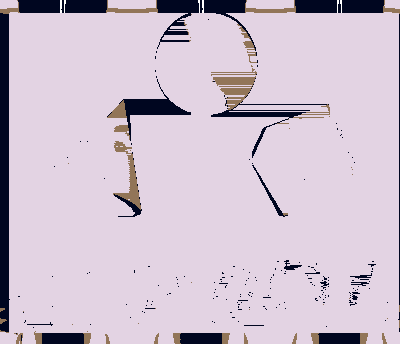
animated GIF by 82times
82times has some programming chops and makes many of his GIFs with command line software, from what I've observed/overheard on dump. Not sure how this one was done but it looks like someone else's image(s) were significantly reduced. The suggestion of a photo-negative plate and badly-scrubbed data intrigues; at the same time there is a fair amount of information and movement here for a mere 41 KB GIF. And that greyed down mauve is to die for, as they say. Unlike many artists with tech savvy, 82times does not put out a press release with every image announcing his mad skillz. His understatement and willingness to play around, try things out, and change tone and style is much appreciated.
